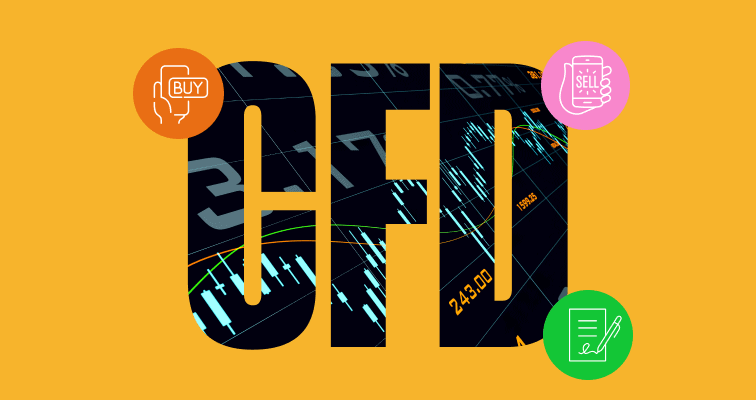In CFD trading, the instruments have distinct functionality features. This appeals to those with a shorter-term approach to gaining exposure to the financial markets. There are additional risks associated with CFD trading, which makes it important to understand how they work.
CFDs are used to trade a wide range of markets and are the preferred choice of some traders. However, there are pros and cons to CFD trading. Establishing if the approach is for you involves developing a better understanding of what CFDs are and how they work.

What is CFD Trading?
Trading returns are determined by the difference in the asset’s price from the time the contract is opened to when it is closed, and any profit or loss is settled in cash.
Why Trade CFDs in Australia?
Australia is a well-regulated market with a robust financial infrastructure, making it an attractive destination for CFD trading. The Australian Securities and Investments Commission (ASIC) oversees the market, ensuring transparency and fairness for investors.
- Leverage: CFDs allow traders to leverage their positions, meaning that they can gain greater exposure to the market with a smaller initial investment. This can magnify potential profits but means that losses will also be magnified to the same extent.
- Market coverage: CFDs provide access to a wide range of markets, including shares, indices, commodities and forex, all from a single trading platform.
- Versatility: CFDs enable traders to speculate on both rising and falling markets, offering opportunities to profit in various market conditions, including “selling short”.
- Leverage pitfalls: The use of leverage can amplify losses as well as gains, meaning that traders can lose more than their initial investment. Understanding leverage is crucial.
- Market volatility: CFD markets can be highly volatile, with prices subject to rapid changes. This can lead to significant losses if not managed properly.
- Psychological factors: Trading CFDs and taking on risk levels in excess of what you are comfortable with can trigger psychological biases that distort your decision-making.
Legal Considerations and Regulations
Understanding the legal framework and regulations surrounding CFD trading in Australia is crucial for safe and compliant trading.

ASIC regulations and compliance
The Australian Securities and Investments Commission (ASIC) regulates CFD trading in Australia. ASIC requires brokers to adhere to strict compliance measures. In 2021, ASIC introduced new measures such as leverage limits for retail clients, reducing the risks linked with trading CFDs.
How to choose a reliable broker
Selecting a trustworthy broker is essential for a successful CFD trading experience. You should ensure that they are regulated, have a good reputation, and have access to a range of markets.
- Regulation: Ensure that the broker is regulated by ASIC, which provides a level of protection and oversight.
- Reputation: Research the broker’s reputation, looking for reviews and testimonials from other traders.
- Trading platform: Choose a broker that offers a user-friendly and reliable trading platform with access to a wide range of markets.
Getting Started with CFD Trading on eToro
Start trading CFDs on eToro by setting up an account and depositing funds. It is a good idea to familiarise yourself with all the features of CFD trading and the eToro platform before booking any trades.

Setting up an account
In order to set up an account, you will need to fill out an application, verify your identity, and fund your account.
- Complete the application: Fill out the broker’s application form, providing necessary personal and financial information.
- Verify your identity: Submit identification documents as required by the broker to comply with regulatory standards.
- Fund your account: Deposit funds into your trading account using one of the available payment methods. You can use guides to help you with this stage of the process.
- Start trading: Once your account is set up and funded, you can begin trading CFDs on your chosen platform or practice using a demo account.
Tip: Use stop-loss orders to manage your risk effectively and protect your capital from significant market swings.
Final thoughts
Understanding the regulatory conditions and risks associated with CFD trading is crucial for making informed trading decisions. It’s essential to take advantage of educational resources that will help you develop strategies that factor in the risks involved.
Learn more about CFD trading by visiting the eToro Academy.
FAQs
- Are CFDs the same as futures?
-
No, CFDs are not the same as futures. Futures are agreements to buy or sell an asset at a certain price within a specified amount of time. CFDs don’t feature these predetermined prices and don’t have specific timeframes.
- What are some of the fees associated with CFDs?
-
The fees you pay to open and close CFDs change based on which platform or broker you use. Common fees include spread fees, overnight fees and commission. You can learn more about eToro’s CFD fees here.
- What is the difference between trading and investing?
-
Trading involves using trading strategies that speculate on short-term price moves, while investing involves adopting a buy-and-hold approach to achieve long-term goals. One commonly used way to differentiate between the two approaches is to consider how long positions are held. Traders might enter into and out of trades in seconds, minutes or days, whereas investors build portfolios based on positions being held for months or years.
This information is for educational purposes only and should not be taken as investment advice, personal recommendation, or an offer of, or solicitation to, buy or sell any financial instruments.
This material has been prepared without regard to any particular investment objectives or financial situation and has not been prepared in accordance with the legal and regulatory requirements to promote independent research. Not all of the financial instruments and services referred to are offered by eToro and any references to past performance of a financial instrument, index, or a packaged investment product are not, and should not be taken as, a reliable indicator of future results.
eToro makes no representation and assumes no liability as to the accuracy or completeness of the content of this guide. Make sure you understand the risks involved in trading before committing any capital. Never risk more than you are prepared to lose.


